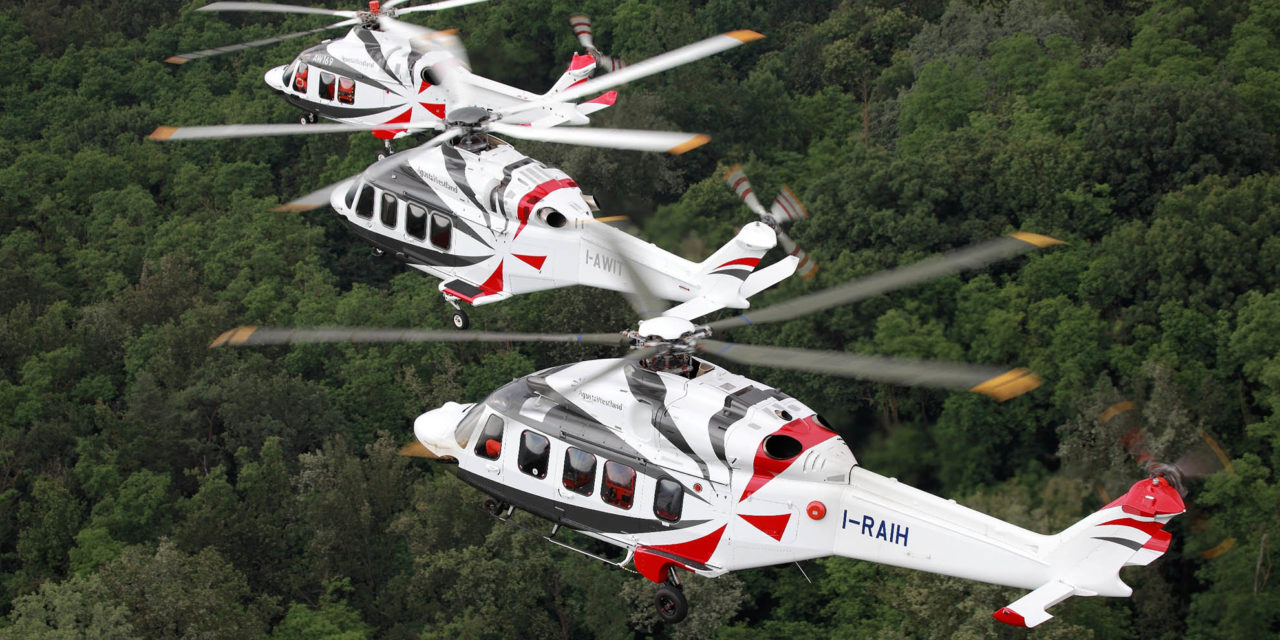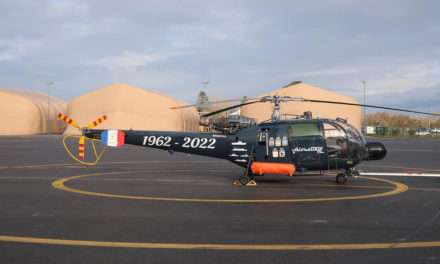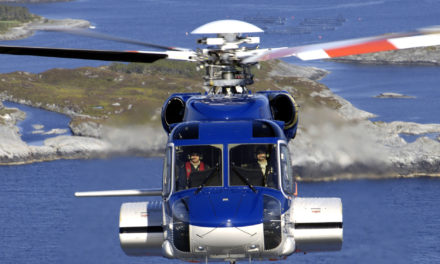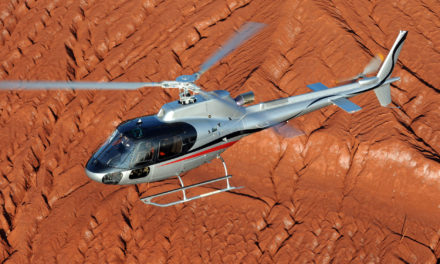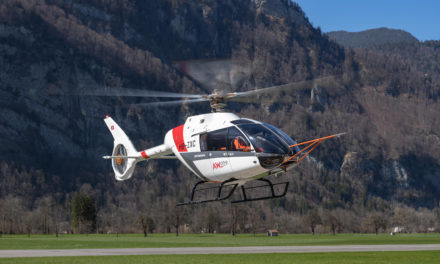With the opening of a new logistics center on the Yeovil site in the UK, Leonardo intends to remain a strong key player in the helicopter industry. Meeting with Roberto Garavaglia, senior vice president Strategy for Leonardo Helicopters.
HI: What is the current state of your sales?
Roberto Garavaglia: 2018 was an exceptional year for us, thanks to two important orders, including one from Qatar. Our MH-139 also won, in cooperation with Boeing, the United States Air Force’s UH-1N Huey Replacement Contract, against the Lockheed-Martin UH-160. We were already convinced that the 139 was a worthy successor to the Bell Huey family of the 1960s and 1970s. The US Air Force choice confirms our thoughts. Since we won this competition, we note a renewed interest of the armed forces for our products. At the Paris Air Show in June 2019, delegations from the American forces came to see the 139 more closely, because not all of them knew it by necessity. Although a helicopter is not a fighter jet, the interest shown in our aircraft has been real and very significant. We even received a visit from the Secretary to the United States Air Force.
Could this contract allow you to win other sales in the military market, including in Asia?
RG: As far as our export markets are concerned, having a machine in service in the US armed forces allows us to use the Foreign Military Sales (FMS) channel, under the arms export control law. It’s an interesting perspective.
HI: Does this contract dedicate the 139 as a US Air Force “stamped” aircraft?
RG: A priori no, unless an institutional operator undertakes to install some internal equipment for strictly military purposes. But the 139 is not destined to know such a mutation. For now, it remains a civil aircraft, with civilian engines, equipment and avionics.
HI: Generally, military operators require specific additional equipments, which increase the weight of the helicopter. Have you planned some improvements for this type of helicopter?
RG: Not at the moment. However, improvements to our aircraft are almost constant over the life of our programs. It is true that the military often introduce additional equipment into their machines, but rarely more people on board. It is always a quest for the best balance between the transport of equipment and soldiers. The AW139 can typically carry twelve to fifteen people. But the military will never carry twelve to fifteen soldiers in this helicopter, but rather eight, and sometimes eleven for very specific missions. The maximum take-off weight of the MH-139 will remain the same as that of the civil version. In fifteen years, the maximum take-off weight of the AW139 has already increased from 6 to 7 tons.
HI: The AW139, which is fifteen years old now, has not changed dramatically. However, it will sometimes be in competition with the Airbus Helicopters H160, even if they do not compete in exactly the same category …
RG: The H160 is smaller than the AW139, indeed.
HI: And the H175 is a bit bigger…
RG: Finally, we are in a situation already encountered in the past. Our helicopters are not in frontal competition with those of Airbus Helicopters. The two helicopter families are a little “offbeat”. From the 109 to the 189, Leonardo Helicopters offers machines of 3, 5, 7 and 9 tons. The Airbus Helicopters products are rather of 4 tons (H145), 6 tons (H160) and 8 tons (H175). Our respective ranges give a widespread choice. So we are not really in direct competition. This is obviously not the result of prior agreement, but rather reflects differences in design criteria and market perception.
HI: What is your vision of the helicopter market?
RG: First of all, our vision of the market is based on an offer where the performance of our helicopters is central – I think we played a role in the current trend of only offering Performance Class 1 helicopters. We also claim a design and architecture of our own. The market has been sensitive, as we are preparing to deliver the 1,000th AW139. What a success ! With no competition in this segment, we have a market penetration rate of around 80%. And we hope that will continue. On the super medium segment, with the AW189, the success is less. But the concept is not to be reviewed, it is the market that, for the time being, does not respond. In my opinion, we will have to wait again before the oil and gaz industry starts again and the helicopter market benefits. It is difficult to foresee a period of recovery, because it depends on this industry itself and its players business plans. On the other hand, I think that a market will emerge for helicopters with less than 16 seats and with a large autonomy. Why ? Because off-shore platforms will increasingly rely on automation, and less on human presence – it is expensive to employ people on these platforms. Decreasing demand for these employees seems logical in the long term. The constant, on the other hand, will be always to fly long distances with a high level of safety. These distances will not decrease. So I see fewer passengers being transported over potentially longer distances. This is favorable to smaller helicopters. I note that this trend has already been affirmed in the world of civil air transport, even if it is not comparable with that of helicopter transport: long-haul (or very long-haul) medium size twinjets nowadays operate on point-to-point routes and have replaced the large four-engine jets previously used to cover these distances. For different reasons, it is possible, if not probable, that the same mutation occurs with helicopters in the oil and gas sector. Having a helicopter able to fly long distances with a limited number of places, brings operational flexibility. In normal operations, this reduces mission costs and requires less investment. During peak periods, the operator can punctually increase the number of missions, without compromising its business model. The case of the AW169, successful on the emergency medical evacuation market, is a little different. In this field, there has been a growing demand for larger machines. For primary medical evacuations, on a disaster site for example, an AW109 Power was long enough to transport a patient on a stretcher, a doctor and a nurse. Now the helicopter is increasingly considered today by hospital managements as a flying resuscitation room and it must be part of the medical system as the projection of a unit of care. This is particularly true for secondary transport – from a small hospital to an examination center or a specialized care center for example. In short, in a context of general cost reduction, a medical logistics system that allows these safe and fast routes requires helicopters that offer such capabilities. The AW169 is a perfect machine for this market. We also regained market share in the UK, where we were virtually excluded, not having a platform adapted to the needs – the 139 was too big, the 109 too small, even the Grand New.
HI: What about the certification process of the AW169 deicing system?
RG: It’s underway. The process is quite long. First tests in natural icing conditions will be carried out during the winter of 2019-2020. And it will take two other winters before getting certification. There is clearly a market for this type of equipment because it brings obvious reliability and operational availability. Some of our customers are looking forward to it. Especially because, with less than a hundred pounds, it affects only very little the payload of the helicopter.
HI: What is the current stage of development and certification of the AW609?
RG: We were aiming for a certification at the end of 2019. It will likely occur in the course of 2020. In fact, primary certification is the responsibility of the US Federal Aviation Administration (FAA). The AW609 is the first tiltrotor VTOL aircraft (Vertical Take-Off and Landing) to be part of a civilian certification. We of course have our manufacturer responsibility, but the FAA also has one as the first certifier: it has to decide if the concept and its realization are reliable and if the machine is fit for public transport according to its criteria. It is normal that great attention be paid to this process.
HI: Is the AW609 the first step towards the development of a larger civil aircraft?
RG: I think the AW609 has the right size to test the market on a wide range of possible applications, both in the civil and in the parapublic field. The selling price is not yet fixed, but it will be over $ 20 million. Of course, its entry into service will need operational support, as well as a marketing campaign. We have prepared a business plan that provides a return on investment over a sufficiently long time. But it’s a real product, not a technological demonstrator! We therefore have a unit business plan based on the number of machines that should be sold, the price, the length of the payback period, and the technical support required for the entire life of the program. That said, we consider it to be a first step towards a range of aircraft, including for military purposes or for a mixed use that we may develop from this concept. The tiltrotor principle has already been demonstrated by other manufacturers. This is a technical solution that can be applied on machines smaller or larger than the AW609. But again, it’s a concept whose viability has already been demonstrated, unlike other architectures.
HI: The AW609 is equipped with Electric Flight Controls. Bell also made this choice for the 525 model. Would you say that the formula is dedicated to a bright future in the field of vertical flight?
RG: It’s an interesting technical solution that needs to be judged on a case-by-case basis. The tiltrotor aircraft can only be flown with Electric Flight Controls. For helicopters, we will approach the issue in a realistic way keeping in mind the cost versus benefit ratio to expect. With regard to the minimum size of a helicopter so that it is advantageously equipped with Electric Flight Controls, several advices coexist. I’ll let the engineers debate! Let’s say that on 6 tonnes or less machines, it’s less appropriate. After that, it depends on the architecture implemented, the unit cost, etc. But there is nothing fixed either.
HI: What is your perception of the European market?
RG: Europe remains a leading market, including in the military field. We were happy to sell four EH101 in Poland. Europe remains an active market, particularly through the development of wind energy.
HI : What about the Asian market?
RG: Asia is of course a promising market for helicopters. In China, the market is still uncertain, but emergency medical transport and police missions are developing. Leonardo Helicopters has installed there an assembly line for the CA 109, but it is not active at the moment. In Russia, an assembly line for the AW139 had been built before the oil prices fall. It is today weakly active.
HI: Was not the AW189K destined for the Russian market?
RG: Among others, yes, but not only for Russia. The 189K is a more powerful version of the 189 that it does not replace. The 189 works very well and has a very good range.But if an operator is looking for a more tactical machine, able to perform missions other than the Off-shore connection over long distances, the 189K which has very interesting operational performances, especially at altitude and at high temperatures, may be suitable. I am thinking in particular of certain operations in mountainous environment, fire fighting at altitude, etc. We are currently prospecting the first customers for this version.

